Sao Paulo Drought Perception Impedes Government Action
Transparency , accountability, and civic participation are key to improving Sao Paulo’s water security.
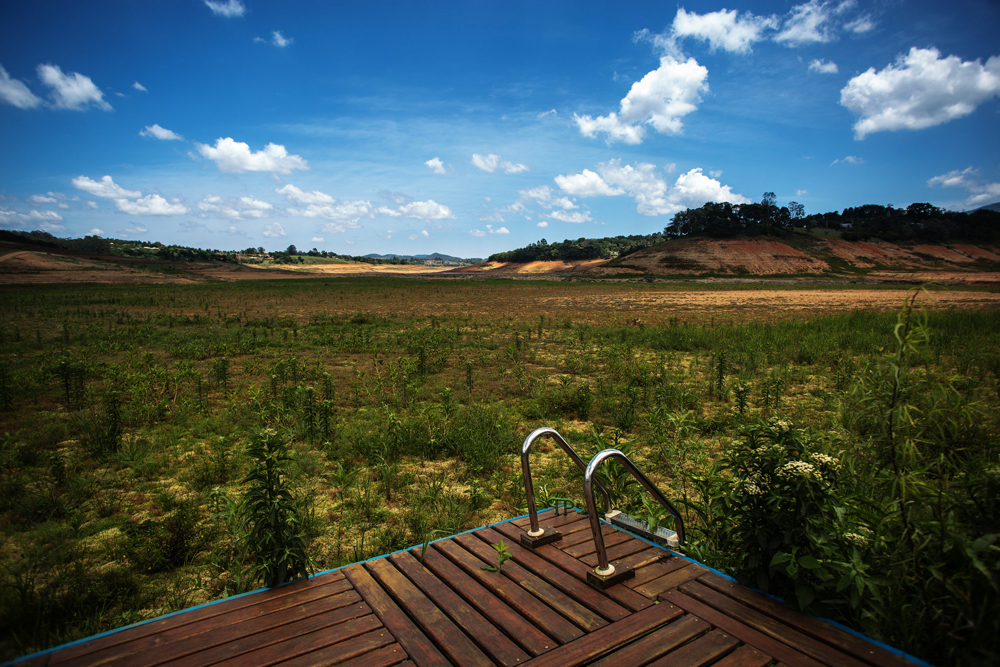
By: Codi Kozacek
Circle of Blue
Sao Paulo is a paradox of water scarcity and abundance. Brazil’s largest city, located in a region that averages 25 more inches of rain each year than Seattle, is gripped by the worst drought in 80 years. Since the drought began last year, Sao Paulo has struggled to provide water to its 20 million residents.
The severity of the drought is apparent in Sao Paulo’s reservoir levels. Collectively, the city’s six primary reservoir systems are 27.1 percent full, compared to 40 percent full at this time last year—a difference that amounts to 274 billion liters, according to data compiled by the Folha de Sao Paulo newspaper.
Water levels in the Cantareira reservoir system, the city’s most important water storage facility is at 20 percent of capacity as the region enters its annual dry season. Cantareira served nearly half of the city’s population before the drought, but now supplies water to 5 million people as water managers turn to smaller reservoirs to relieve pressure on the system.
–Newsha Ajami,
Director of urban water policy
Water in the West
The Alto Tiete reservoir system, less than half the size of Cantareira, currently is at 22.4 percent of its capacity, and supplies 4.5 million people.
The city’s drained reservoirs, though, represent only a portion of the challenge facing Sao Paulo’s water managers. Another is how residents view the drought. Though reservoir water levels are disturbingly low, Sao Paulo still lacks the visual evidence of a drought as seen in places like California, Australia, and Mexico. That’s because a lot of the city is still very green and heavy rains still occur.
“They are in a drought, but the meaning of a drought is really different depending on where you are,” Newsha Ajami, director of urban water policy for Stanford University’s Water in the West program, told Circle of Blue. Ajami was invited to Sao Paulo in December 2014 to discuss water issues with state officials. Ajami added that the city flooded while she was there. “If you live in an area where drains are overflowing every time it rains, you’re not going to say it is a drought. Perception definitely matters.”
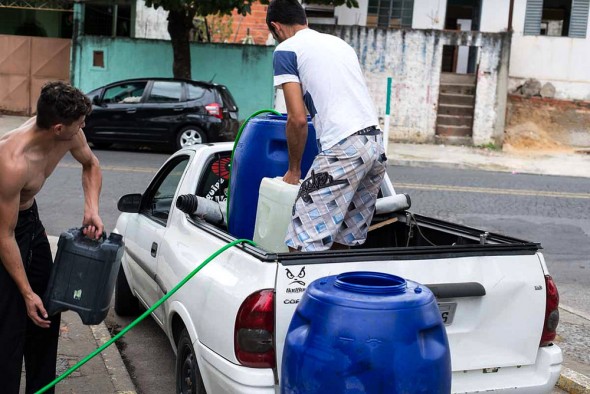
Situated on a plateau 700 meters above the sea, the city is at the headwaters of the Alto Tiete river basin and averages about 1,600 millimeters (63 inches) of rain each year—25 inches more than Seattle. Reservoirs like Guarapiranga, Rio Grande, and Billings hold large amounts of water, but they are either too small or too polluted to bolster Sao Paulo’s water security. In addition, the city is still flooding during the rainy season. Floods made headlines earlier this month, as well as in November, December, and February.
“We are definitely seeing that it has been raining less, but there have been some dramatic events,” Pedro Jacobi, a professor of education and environmental science at the University of Sao Paulo who studies water governance, told Circle of Blue . “We have a situation where the reservoirs are empty, but if it rains in the city, it has so much asphalt that if you have 50 to 60 millimeters [of rain] you are under water in many parts.”
The result is a landscape that belies the severity of the water crisis and a skewed perception that complicates voluntary conservation efforts—Sao Paulo’s primary tool for ensuring adequate water supplies in the short-term.
–Pedro Jacobi,
Professor of education and environmental science
University of Sao Paulo
Further clouding the public’s view of the drought is the government’s response, which has been characterized by disorder, distrust, and a general lack of urgency. For example, residents began complaining of dropping water pressure in their homes as early as May 2014, but officials did not admit to water rationing until March 2015. Instead, the government persistently held that rain would refill the reservoirs, negating the need for more drastic measures.
But the rains have not been frequent enough to pull Sao Paulo back from the edge, making it clear that the city’s tried and true method of waiting out droughts will no longer work in an era of changing climates and megacities with massive populations. In 1980, four years after the Cantareira system first came online, 12 million people lived in the Sao Paulo metropolitan region. Now, 20 million live there.
In drought-prone places like Australia and California, changes in water management and governance are already taking place to meet these new challenges. Government reactions to severe droughts have become more deliberate and effective as a result.
In Sao Paulo, water experts hope the drought will be used as an opportunity to improve the city’s future water security. “You have to think about the way of dealing with a crisis that has not just come in the short-range, but has come to stay,” Jacobi said. “You have to look at it as permanent. We can learn from San Francisco, from many situations. We have to learn that you cannot only depend on the government. You have to organize yourselves, developing more social learning to engage people into doing something not because the government is saying, but because it is the way we develop as a city.”
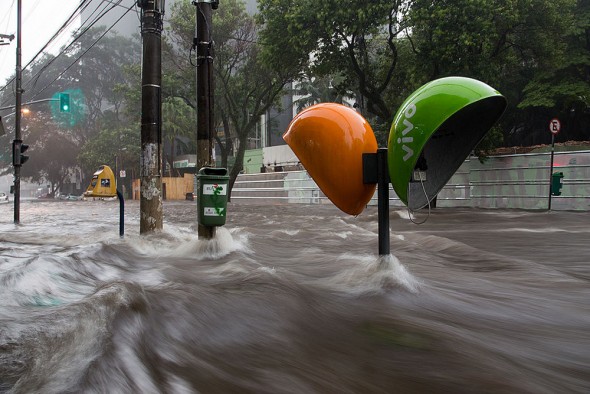
A Green Drought
Sao Paulo began to contend with drought in early 2014, when rainfall during January, February, and March was half the long-term average. The region usually receives almost 80 percent of its average annual precipitation during those three months. The Cantareira reservoir dropped as low as 3 percent of capacity in October 2014. Pipes were extended twice last year to pump out the “dead volume” of water at the very bottom of the reservoir—actions that sustained the city through the 2014 dry season. In December, officials also tapped the dead volume in the Alto Tiete system.
This year, rainfall was above average in February and March, but water levels in the Cantareira reservoir only increased 8 percent over the course of the rainy season. Nonetheless, the city is not without water.
“When you drive through the city, my first reaction was: they have running water through the city,” said Newsha Ajami of Stanford University’s Water in the West program. “It has a significant amount of water, but a lot of it is polluted. It makes it very interesting because when you compare it to the cities in California, you can see how different they are. We don’t necessarily have running rivers in this area.”
Transparency, Accountability, and Public Engagement Needed
Perception of the drought is important for urging public officials to act, and also for encouraging residents to conserve. The city’s utility, SABESP, began in February 2014 by offering residents a 30 percent discount on their water bills if they cut their usage by 20 percent. In February 2015, SABESP also started enforcing penalties for those who used the most water. These efforts helped achieve a 25 percent reduction in water use, according to SABESP, but the utility’s profits were halved last year. Long-term solutions—namely, the construction of additional water transfers from outside river basins and improvements to the city’s infrastructure—are years away, making conservation vital.
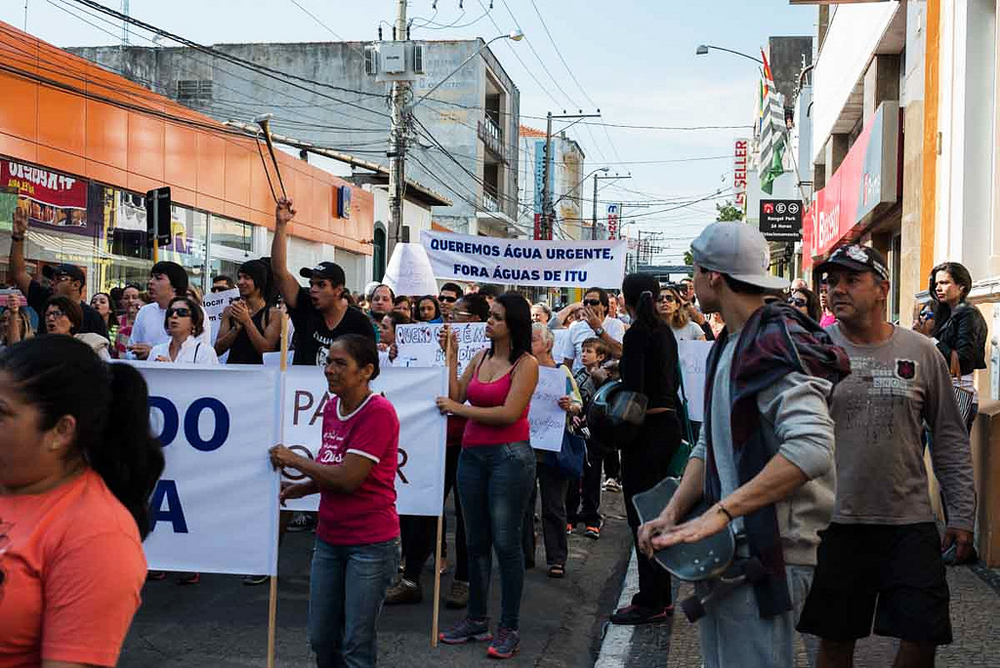
“The water authorities and the government, they tried not to show the drama of the problem,” Jacobi said. “They put all the responsibility on the climate, the lack of rain. Obviously, we have to look at it from a larger approach and see that this also has to do with a lack of governance.”
In addition to the belief that rains would soon replenish the reservoirs and end the drought, officials did not face significant pressure from the public to act. Instead, the public waited for the government to fix the problem, which it did not. In turn, the halting government response fostered distrust among residents. Many Brazilian and international media outlets blamed elections last fall for the government’s reluctant acknowledgement of the drought.
–Pedro Jacobi,
Professor of education and environmental science
University of Sao Paulo
“Unfortunately, our society is always very dependent on how authorities present the problems and issues,” Jacobi said. “It is a very patrimonial society, very different from American society. People are very cooperative when a disaster is taking place. When a natural phenomenon occurs—drought, floods—then people are very collaborative. They donate clothes. But the preventative side is very fragile and always has been very fragile.”
Jacobi believes that trust toward water managers and government officials could have been preserved, and the drought response made stronger, if the public had been involved earlier. He also called for more accountability and transparency.
“Social society hast to bring more and more pressure,” he said. “The fact is, when dealing with water, we are not talking about profit, but human rights. It is always true that when a problem occurs, it is those worst off who will be worst off with water. They need to give a real perception that people can trust the government and that governors or authorities have to be more and more honest about such a very dramatic reality. This implies obviously stipulating that people are not being punished, but doing what they have to do so they can have water longer, making water cost more for those who spend more, and rethinking investments that are necessary.”
A news correspondent for Circle of Blue based out of Hawaii. She writes The Stream, Circle of Blue’s daily digest of international water news trends. Her interests include food security, ecology and the Great Lakes.
Contact Codi Kozacek
Leave a Reply
Want to join the discussion?Feel free to contribute!
Leave a Reply

 The Stream, May 5: Extreme Weather Threatens China Infrastructure, Official...
The Stream, May 5: Extreme Weather Threatens China Infrastructure, Official...

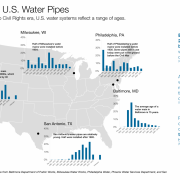
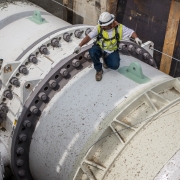
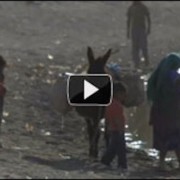

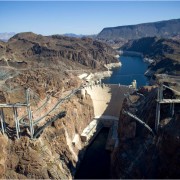
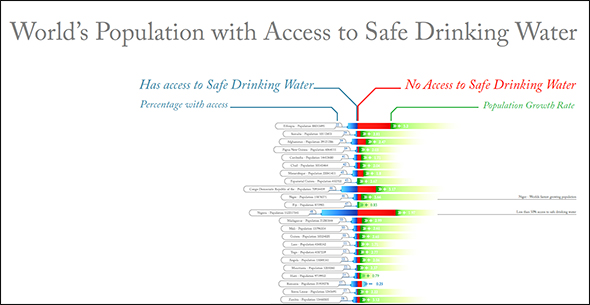


Great article.
Very good article.
You might also find this of interest: http://www.mintpressnews.com/MyMPN/goodbye-flying-rivers-amazon-rainforest-drying/